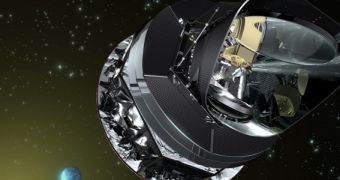Using data from the European Space Agency's (ESA) Herschel Space Observatory and Planck Telescope, an international collaboration of astronomers was recently able to discover four previously-unknown galaxy clusters in the distant Universe. The team says that similar findings are very likely in the future.
These two telescopes are among the most complex and capable ever built. While operational, Herschel was able to provide extreme views in near-infrared, optical and ultraviolet wavelengths, while Plank analyzed the cosmic microwave background (CMB), the relic radiation left over from the Big Bang.
By combining deep-sky surveys from both telescopes, the research group – coordinated by astronomers at the Imperial College London – was able to discover four galaxy clusters hidden early on in the history of the Universe. The team says that as many as 2,000 other clusters may still be hiding in the data.
Though more work is needed to analyze the clusters, the group says that they are located at least 10 billion light-years away from Earth, which means that we currently see them as they looked when the Universe was around 3.75 billion years old, Astrobiology Magazine reports.

 14 DAY TRIAL //
14 DAY TRIAL //